Being a powdered energy drink, there’s a lot more going on in a serving of G Fuel Energy Drink—packing a lot more ingredients and nutrients than even in canned G Fuel.
If you’ve clicked on this article, you’re probably wondering what exactly goes into a regular serving of powdered G Fuel.
In short, a single 7g serving of G Fuel powder contains 25 calories, has 150g of caffeine, and is completely sugar-free.
With that out of the way, if you’re here for a more in-depth look at all the ingredients that go into G Fuel—from ingredient complexes to their nutritional value, stick around.
Let’s get started…
G Fuel Nutrition Facts
Comparing the nutritional value of G Fuel Powder with canned G Fuel.
| G Fuel Can (16 fl. oz) | G Fuel Powder (7g) | G Fuel Can (16 fl.oz) |
| Energy | 25 calories | 0 calories |
| Fat (Of which Saturated) | 0g (0g) | 0g (0g) |
| Carbohydrate (Of which Sugars) | 5g (0g) | 0g (0g) |
| Sodium | 79mg | 70mg |
| Caffeine | 150mg | 300mg |
| Vitamin C | 250mg | 45mg |
| Vitamin E | 15IU (International Units) | – |
| Vitamin B3 (Niacin) | 45mg | 4mg |
| Vitamin B6 | 10mg | 0.4mg |
| Vitamin B12 | 425μg | 0.6µg |

If you want to learn more, I’ve covered everything you need to know about G Fuel’s nutritional information in my other article.
How Many Calories Are In G Fuel?
Each 7g serving of G Fuel has 25 calories, which is pretty small.
The good news is, G Fuel’s low calories mean you can fit it into your diet without needing to worry about adding too many calories to your existing meal plans.
On the other hand, the bad news is, G Fuel doesn’t actually provide your cells with much energy, which is great if you happen to be on a diet, but not as much when you actually need the energy.
Your body does require a pretty hefty amount of calories, which, for a healthy young adult, ranges from around 2000 to 2400 calories for women and 2400 to 3000 calories for men.
So, while mixing up a serving of G Fuel can definitely give you a decent boost, it’s not a substitute for an actual meal, though it can put a dent in your appetite if you’re constantly drinking it.
If you’re feeling a little peckish, it’s always best to complement G Fuel with an actual meal, which will give you both the caffeine boost as well as some healthy calories to burn.
That said, if you prefer energy drinks with some amount of calories, take a look at the article I’ve written on the best energy drinks with less sugar, where I’ve listed some amazing alternatives.
What ingredients is in G Fuel?
Everything that goes into a serving of G Fuel is explained (within reason, of course) in this section.
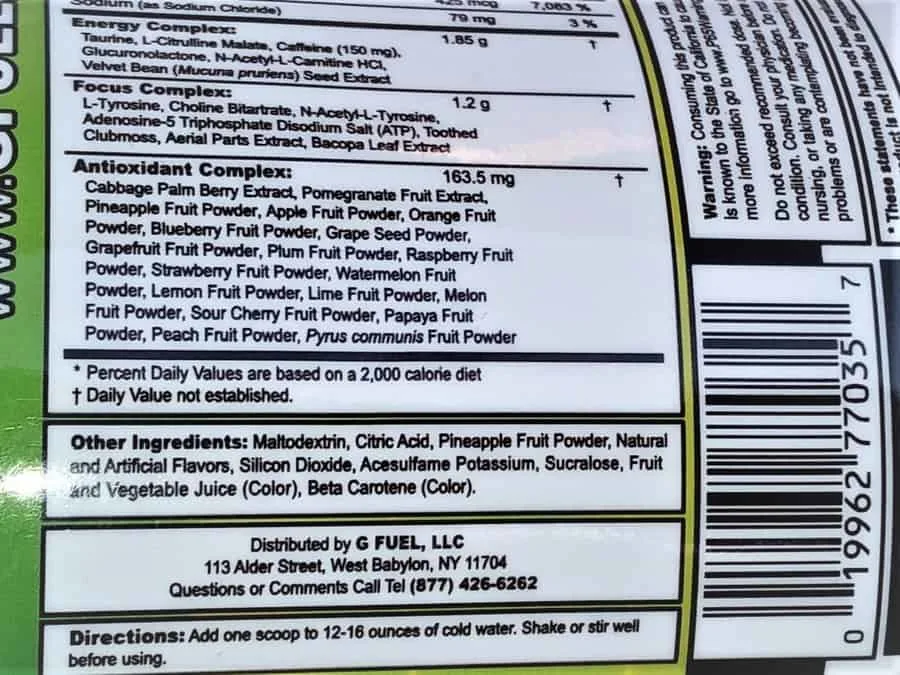
G Fuel ingredients are separated into 3 distinct complexes. Namely, the Energy Complex, the Focus Complex, and the Antioxidant Complex.
Energy Complex
G Fuel’s Energy Complex consists of 1.85g of the following ingredients:
- Taurine
- L-Citrulline Malate
- Caffeine (150mg)
- Glucuronolactone
- N-Acetyl-L-Carnitine
Taurine
Taurine is an amino acid that is often added to energy drinks, including G Fuel, and is said to provide some notable benefits.
Taurine is a pretty common ingredient in the energy drink world, although it’s most commonly associated with Red Bull mostly due to the rumor that taurine content is derived from a bull’s you-know-what.
In any case, the taurine present in G Fuel is most likely made from synthetic sources, so it shouldn’t really deter you if you happen to be vegan or vegetarian.
As for how effective taurine actually is, the science doesn’t really prove that there are actually immediate benefits from having taurine.
And considering we don’t know the dosage of Taurine in G Fuel, it’s hard to tell if the Taurine in G Fuel actually has any positive effect at all.
If you’re looking for energy that is loaded with taurine, read this article.
L-Citrulline Malate
L-Citrulline is an amino acid that is actually derived from watermelons. It’s also pretty effective in improving athletic performance, as well as treatment for heart failure.
Ideally, you would want 2.4 to 5g of L-Citrulline per day in order to achieve a noticeable change in athletic performance.
Since the L-Citrulline content is only found within the 1.85g Energy Complex, it’s hard to say if you’ll gain any substantial benefits from the L-Citrulline in G Fuel, even if you do have 2 servings of G Fuel a day.
Glucuronolactone
Glucuronolactone is a naturally produced substance found in the connective tissue of the body, so its inclusion in G Fuel as an energy supplement is definitely an odd choice.
In G Fuel, glucuronolactone supposedly helps improve your attention span and athletic performance.
That said, there hasn’t been any conclusive evidence that proves that it’s the ingredient itself that provides those benefits.
Due to how a lot of the mentioned benefits of glucuronolactone can be attributed to caffeine, it’s hard to tell how big of a part glucuronolactone actually plays in giving you energy.
N-Acetyl-L-Carnitine
N-Acetyl-L-Carnitine, and L-Carnitine themselves, are derivative amino acids used by the body to turn fat into energy.
If you’re relatively young and healthy, you technically don’t need L-Carnitine in your diet considering that your body already produces pretty sufficient amounts of it already.
Some possible benefits of including this ingredient in G Fuel would be that it can reduce feelings of tiredness in older individuals, and also reduce post-workout fatigue.
For the most effective use of L-Carnitine, WebMD recommends you use somewhere between 1 to 3g.
Considering the fact that N-Acetyl-L-Carnitine is just one of the components in the Energy Complex, which is only 1.85g in total, it seems pretty unlikely that there’s much of this ingredient included in G Fuel’s ingredients.
Focus Complex

G Fuel’s Focus Complex has 1.2g of the following ingredients:
- L-Tyrosine
- Choline Bitartrate
- Adenosine-5 Triphosphate Disodium Salt (ATP)
- Toothed Clubmoss
- Aerial Parts Extract
- Bacopa Leaf Extract
L-Tyrosine
L-Tyrosine is an amino acid that can assist you in improving your memory as well as countering the effects of sleep deprivation, which makes it a great ingredient to have in an energy drink.
On top of that, research shows that taking L-Tyrosine may improve mental performance, usually under stressful conditions, which, for a gaming drink such as G Fuel, is a pretty key asset.
According to WebMD, the most common dosage of L-Tyrosine ranges from 100 to 300mg, which can definitely be fit into the 1.2g Focus Complex, although we can’t be certain exactly how much is included.
Choline Bitartrate
Choline is an ingredient that is pretty similar to B-Vitamins. Some of the possible benefits of Choline include:
- Improving memory and cognitive abilities
- Protecting heart health
- Increased metabolism
While it may seem pretty beneficial that you can get choline from G Fuel, you already get plenty of the stuff from a well-rounded meal, so your mileage may vary regarding its possible benefits.
Adenosine-5 Triphosphate Disodium Salt (ATP)
Going back to high school, if you recall, the mitochondria are the powerhouse of the cell, and ATP is often associated with it.
While ATP does provide energy to your cells, it’s not exactly viable as an ingredient, as it doesn’t seem to do anything when you ingest it orally, such as with G Fuel.
It’s an interesting ingredient for sure, but it doesn’t really add much to G Fuel overall.
Toothed Clubmoss
Toothed Clubmoss or Huperzia Serrata is a common herb used for a variety of treatments.
That said, the question of whether it has any beneficial properties has yet to be determined, as there hasn’t been any extensive research done on the plant so far.
We also don’t know how much is included in G Fuel’s ingredients.
Plant Extracts
Aerial Parts Extract is mostly a buzzword galore, as it doesn’t really mean anything.
Aerial Parts, simply refer to parts of a plant that are above ground, such as the stem and leaves, as opposed to the roots.
As for which plant extract this specifically refers to, it really doesn’t say, so there’s not much to discuss it.
Bacopa Leaf Extract, on the other hand, does exist and is a traditional Indian herb that is used for improving memory in young children.
There’s some merit to the claim that Bacopa Leaf may help improve memory, but given that we don’t exactly know the dosage present in G Fuel, it’s hard to know whether it has any actual effect.
Antioxidant Complex
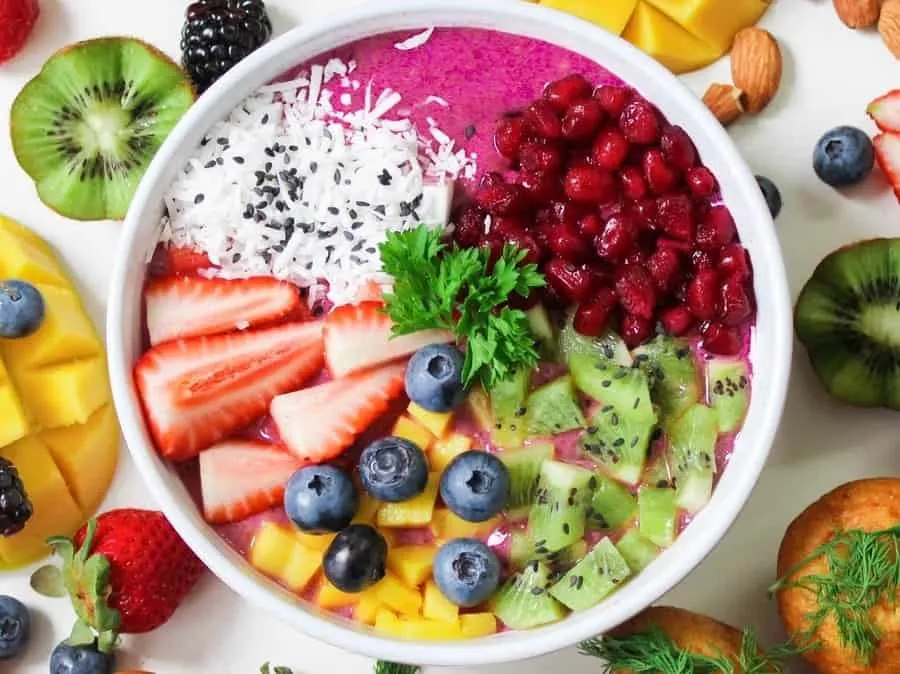
As for G Fuel’s Antioxidant Complex, it mostly consists of dried fruit powders which round up to 163.5mg inclusive of the following:
- Cabbage Palm Berry Extract
- Pomegranate Fruit Extract
- Pineapple Fruit Powder
- Apple Fruit Powder
- Orange Fruit Powder
- Blueberry Fruit Powder
- Grape Seed Powder
- Grapefruit Seed Powder
- Plum Fruit Powder
- Watermelon Fruit Powder
- Lemon Fruit Powder
- Lime Fruit Powder
- Melon Fruit Powder
- Sour Cherry Fruit Powder
- Papaya Fruit Powder
- Peach Fruit Powder
- Pyrus communis Fruit Powder
Other Ingredients
Maltodextrin
Maltodextrin is an additive that is used as both a thickening agent and a preservative.
It also ranks quite high on the Glycemic Index (GI) scale and can cause a serious blood sugar spike, which isn’t safe if you happen to be diabetic.
If you happen to be diabetic and don’t want to risk the maltodextrin content, I’ve got an article detailing the best energy drinks for diabetics, which might be useful for you.
As always, if you’re worried about having anything particular in G Fuel, it’s best to consult your doctor before including G Fuel in your diet.
Citric Acid
If you’ve ever bitten into a lemon or lime, you probably know what citric acid tastes like.
Having a distinctly sour taste, citric acid is used mostly to add some flavor and balance the pH value of G Fuel.
For more information on citric acid, take a look at this article on WebMD here.
How Much Caffeine Is In G Fuel?
Each 7g serving of G Fuel has 150mg of caffeine, which is about twice as much as what you’d get from a regular 8.4 fl. oz can of Red Bull.
Considering that each 7g of G Fuel powder is mixed with 12 to 16 fl. oz of water, the caffeine content is actually a pretty standard amount of caffeine for an energy drink.
For reference, it translates to roughly the same as a 16 fl. oz can of Rockstar or Monster (160mg each).
While I personally prefer to have between 50 to 100mg of caffeine per serving, 150mg isn’t that much higher, so I might occasionally go for it if I feel like I need something stronger.
Of course, depending on your caffeine metabolism, 150mg might be just the right amount for you.
In addition to that, the flexible nature of G Fuel would allow you to adjust your G Fuel servings to what best suits you, though it’s also for the best that you don’t go too overboard with all that G Fuel Powder.
Remember, the FDA approves a caffeine intake limit of no more than 400mg per day. Any more than that might lead to side effects such as:
- Insomnia
- Restlessness
- Headaches
- Stomachaches
- Dizziness
- Dehydration
- Anxiety
For more info on the dangers of excessive caffeine consumption, take a look at the video below:
So, be sure to watch how much caffeine you consume while having G Fuel. While a single serving may not be much, add another caffeinated beverage, and you might find yourself a lot more jittery than usual.
Does G Fuel Have Sugar?
G Fuel is entirely sugar-free, which means you don’t have to worry about the presence of sugar in this particular energy drink.
This is great from a health perspective, as too much sugar in your diet can and will lead to some alarming consequences, such as:
- Weight Gain
- Type II Diabetes
- Increased risk of heart disease
- Tooth decay
- Kidney damage
- Acne
- Increased risk of depression
Plus, you also get to avoid the dreaded sugar crash, which isn’t something you want out of any energy drink.
If you’re looking for some other great sugar-free energy drink options, I’ve written an article on the best energy drinks without the crash, which you’ll hopefully find useful.
Does G Fuel Use Artificial Sweeteners?
While free of regular sugar, G Fuel does contain a couple of artificial sweeteners to improve its taste, namely sucralose and acesulfame potassium.
Both sucralose and acesulfame potassium are zero-calorie sweeteners, and thus, don’t really affect the overall nutritional value of G Fuel.
While there are plenty of controversies concerning the long-term use of artificial sweeteners, you shouldn’t be too concerned, as the FDA has approved them for general use.
Thus, as long as you’re not consuming too many drinks with artificial sweeteners in them, you should be perfectly fine.
For more information on artificial sweeteners and if they’re bad for you, have a quick look at the video below:
Vitamins in G Fuel
What’s an energy drink without healthy smattering B-Vitamins and other miscellaneous alphabets? G Fuel contains quite a number of B-Vitamins, along with Vitamin C and Vitamin E.
While the B-Vitamin content might seem over the top, B-Vitamins are actually water-soluble, so any excess vitamins you ingest would be removed from the body on your next visit to the bathroom.
Here’s a table listing the vitamins in G Fuel, but if you still want more information on B-Vitamins, click on the link here.
| Purpose | Amount per 7g of G Fuel | Tolerable Upper Intake Level | |
| Vitamin B3 (Niacin) | helps the body release energy keeps the skin healthy | 45mg | 35mg |
| Vitamin B6 | store energy from protein and carbohydrates formation of red blood cells | 10mg | 100mg |
| Vitamin B12 | release energy from food forms red blood cells keeps the nervous system healthy | 425µg | – |
| Vitamin C | controls infections and heals wounds antioxidant | 250mg | 2000mg |
| Vitamin E | antioxidant | 15IU | 1000mg |
Does G Fuel Contain Lead?
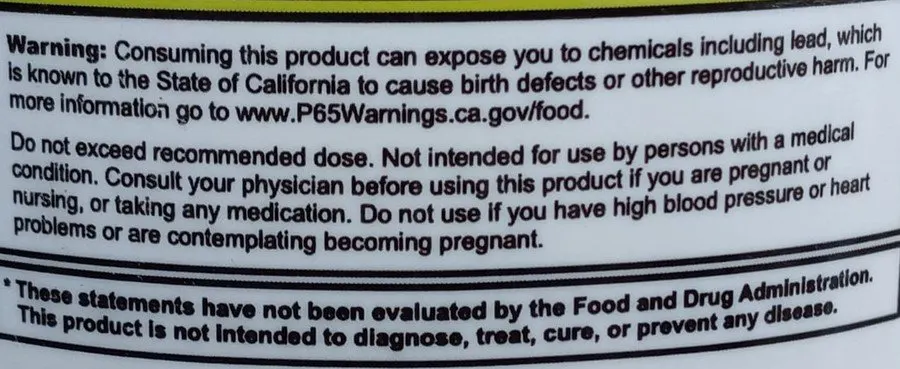
G Fuel’s lead warning is much less about the product actually containing lead, and more about Californian state law, specifically Prop 56:
As you can see from the Twitter post by G Fuel’s CEO, the amount of lead present in G Fuel isn’t actually harmful. So, you shouldn’t really have to worry much about this particular warning.
G Fuel Powder or G Fuel Cans?
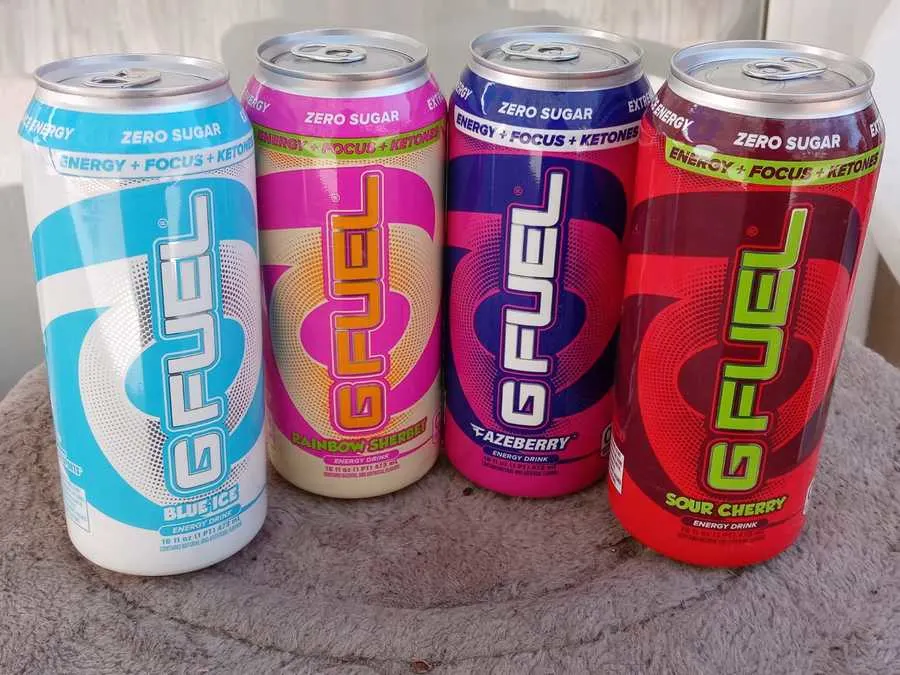
It mostly depends on personal preference. If you’re in a rush, G Fuel cans are the way to go, but it’s definitely hard to beat the flexibility of G Fuel Powder.
G Fuel cans require no preparation and are also carbonated, which might allow you to enjoy the drink more if you’re looking for a standard energy drink and enjoy the fizz.
G Fuel Powder, on the other hand, is infinitely flexible regarding how much you want in each serving, which is great, especially if you can’t handle the canned version’s 300mg of caffeine.
For more info, on the whole, G Fuel Can vs. Powder debate, take a look at the article I’ve written on the subject. It’ll definitely change your mind on a bunch of things.
How Much G Fuel Can You Have A Day?
| G Fuel Powder (7g) | Daily Max Limit (Female/Male) | |
| Calories | 25 calories | 2400 calories/3000 calories |
| Sugar | 0g | 25g/36g |
| Caffeine | 150mg | 400mg |
I personally recommend that you have no more than two servings of G Fuel powder per day, owing to the relatively high caffeine it contains.
While you can definitely tailor your G Fuel to your own liking, it’s always best not to overdo it since it does contain caffeine, and too much caffeine can lead to a pretty bad headache and other side effects.
In the case of G Fuel, two servings will already put you at 300mg of caffeine. Add in any more, and you might find yourself on that 400mg daily limit pretty soon.
Keep in mind that coffee, tea, sodas, and even chocolate also contain caffeine. So, it’s pretty easy to get to that 400mg daily limit if you’re not careful and aware of what you’re having.
As with all caffeinated beverages, moderation is definitely key, so don’t try and overdo your G Fuel servings, and be sure not to double down on other caffeinated beverages while having G Fuel.
What are the side effects of G Fuel?
Overconsumption of G Fuel or any energy drink can result in the following side effects:
- jitters
- headaches
- stomach problems
- sleep problems
- rapid heartbeat
- sweating
Find out more about the side effects of energy drinks in this article.
G Fuel Flavors
With over 35 flavors, there’s definitely a G Fuel out there that suits your particular taste. Here are just some of the few you might be interested in:
- Battle Juice
- Bahama Mama
- Blue Ice
- Bubble Gum
- Cherry Limeade
- Coconut
- FaZeberry
- French Vanilla Ice Coffee
- Guava
- Rainbow Sherbet
- Star Fruit
- Strawberry Shortcake
- Tropical Rain
- Wumpa Fruit
G Fuel Alternatives
If you’re looking for other great energy drinks that are similar to G Fuel in ready-to-drink form, here’s a quick list to get you started:
- Amino
- Red Bull
- Rockstar
- Reign
- Celsius
- C4 Energy
- Game Fuel
- Xyience
- Raze
- 3D Energy
- C4 Energy
- Full Throttle
There are also some other great powdered options for you to consider too:
- Zipfizz
- Advocare Spark
- REIZE Energy Drink (my fav)
REIZE (10 out of 10)
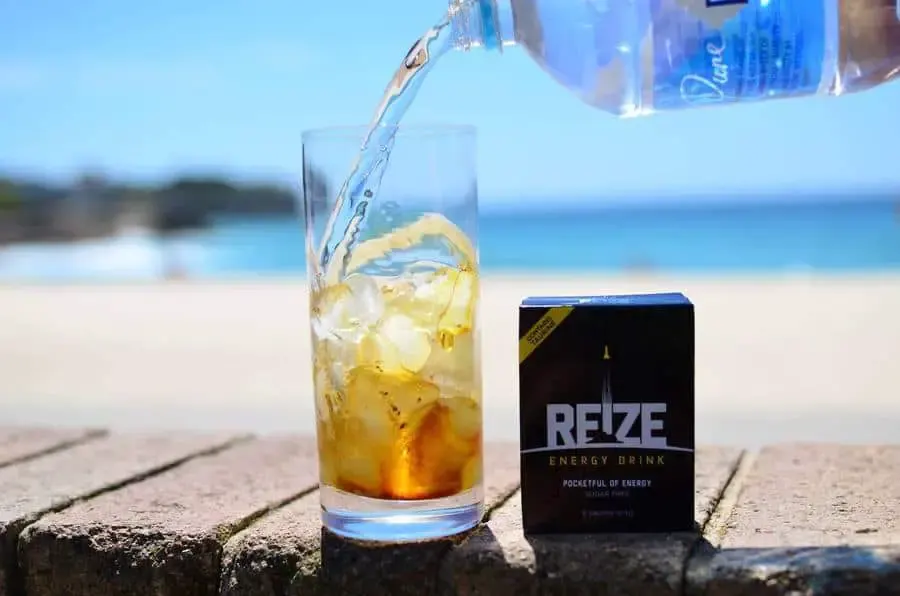
If you’re a fan of energy drink powders, you’ll love REIZE.
REIZE comes in convenient 4 g sachets, with a sensible 50mg of caffeine, is completely sugar-free, and has only 11 calories per serving.
It also contains a bunch of beneficial ingredients, such as taurine, ginseng, and B-group vitamins. All come together in a smart formula to give you the perfect energy boost, without the crash.
Best of all, you can get REIZE shipped straight to your door for only about $1 per drink.
That’s amazing value for money.
Try REIZE today and I’m sure you’ll agree that it’s a smarter choice than G Fuel.

